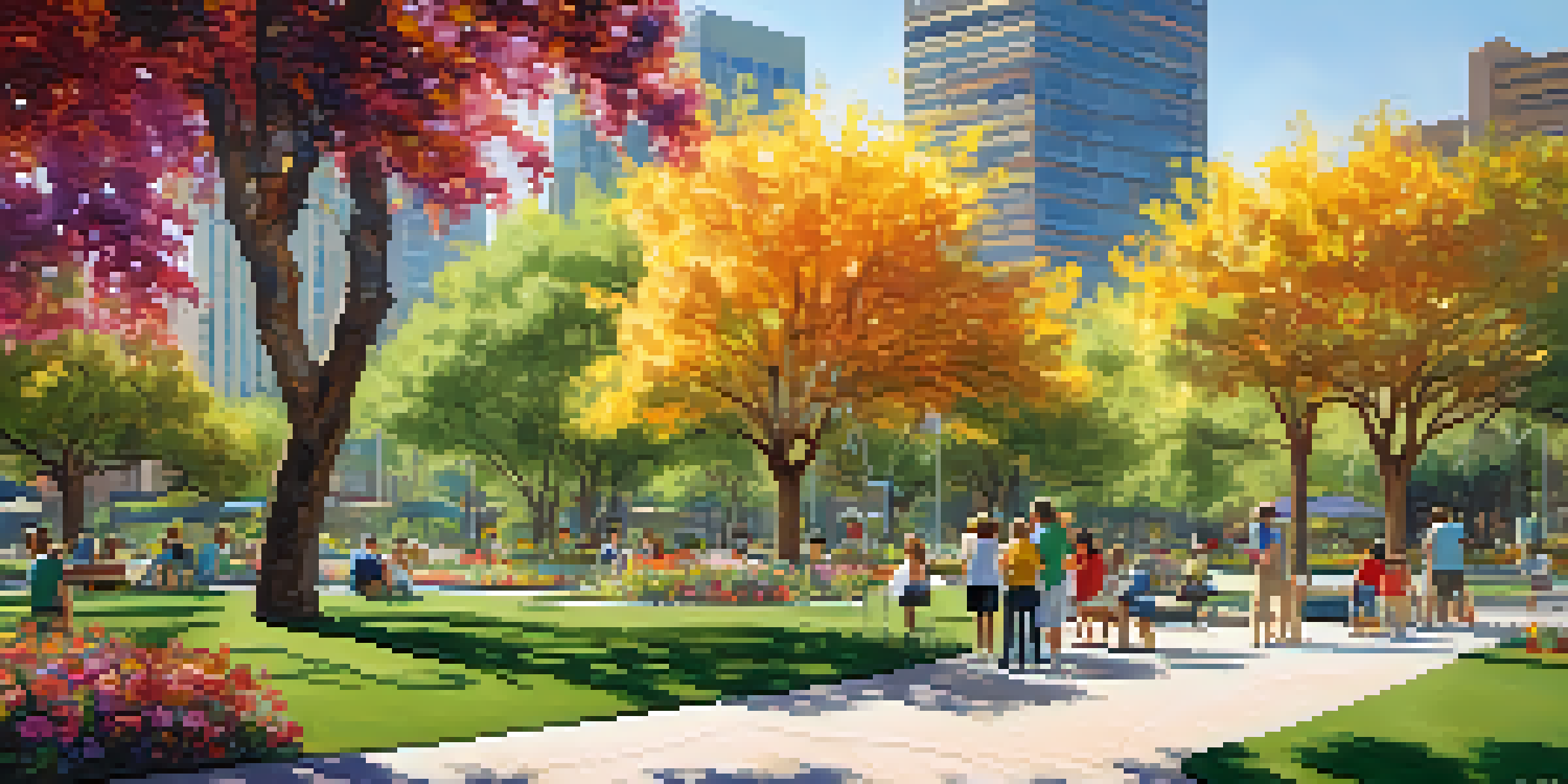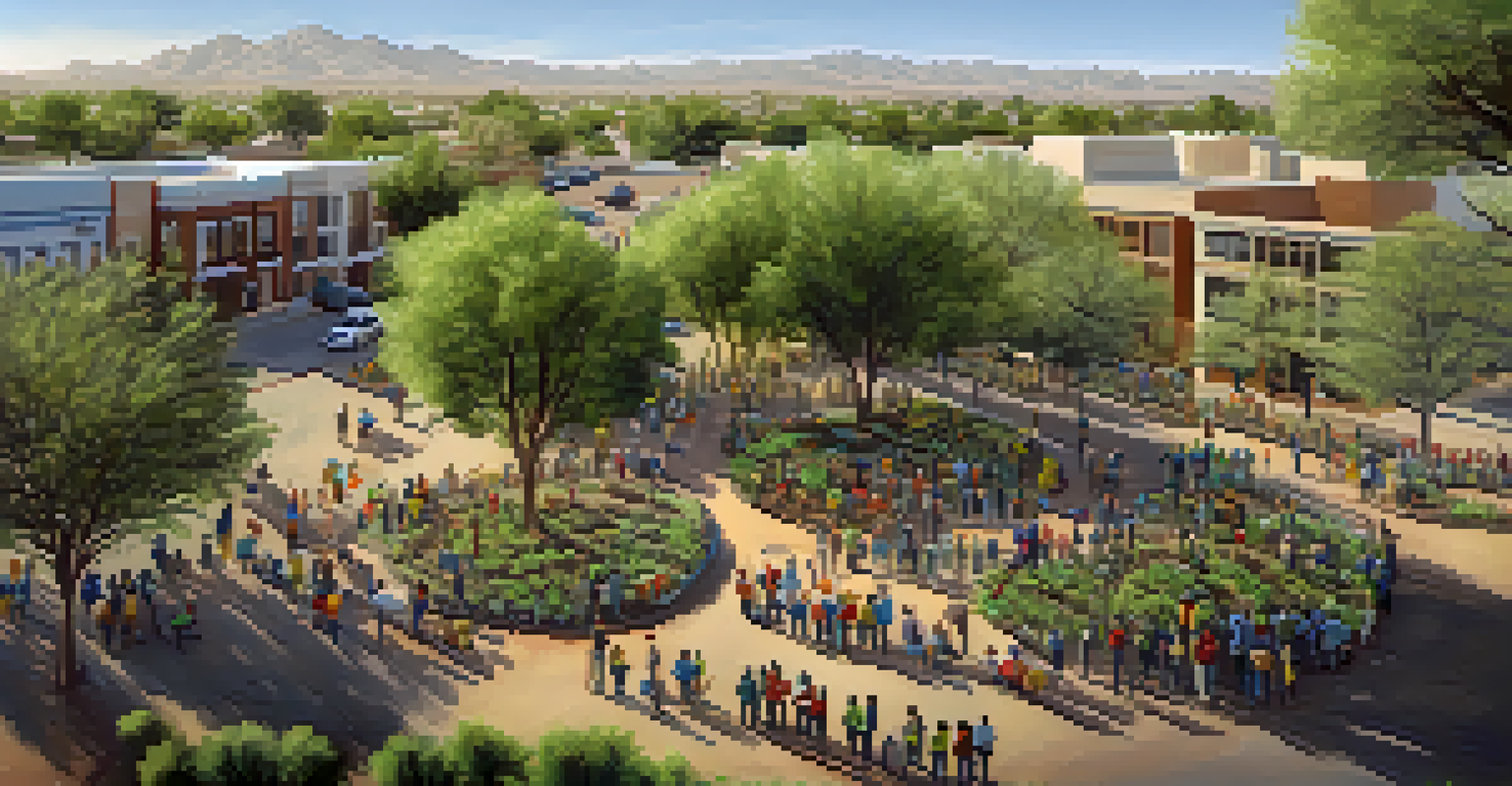Urban Heat Island Effect: Phoenix's Rising Temperatures

What is the Urban Heat Island Effect?
The Urban Heat Island (UHI) effect refers to the phenomenon where urban areas experience higher temperatures than their rural surroundings. This temperature difference is primarily due to human activities and the materials used in city construction, such as asphalt and concrete, which absorb and retain heat. Essentially, cities become 'islands' of warmth amid cooler rural areas, affecting local climates significantly.
The greatest threat to our planet is the belief that someone else will save it.
In Phoenix, this effect is particularly pronounced due to its desert location and rapid urbanization. As more buildings, roads, and parking lots replace natural landscapes, the heat-absorbing surfaces multiply, exacerbating the UHI effect. This leads to higher energy consumption, increased air pollution, and even health risks for residents, especially during the sweltering summer months.
Understanding UHI is essential as we look for solutions to mitigate its impact. By recognizing how our urban environments contribute to rising temperatures, we can better address the challenges posed by climate change and make informed decisions about urban planning and development.
Factors Contributing to Phoenix's Rising Temperatures
Several factors contribute to the rising temperatures in Phoenix, primarily urbanization and climate change. As the city expands, green spaces diminish, and areas once covered by vegetation are replaced with buildings and roads. This loss of greenery not only increases surface temperatures but also reduces the natural cooling effects that plants provide through shade and evapotranspiration.

Moreover, climate change plays a significant role in amplifying the UHI effect. With global temperatures increasing, Phoenix is experiencing hotter summers and milder winters. This trend is alarming, as it means that the city has to grapple with not just the heat generated by urbanization but also the broader climatic changes affecting the region.
Urban Heat Island Effect Explained
The Urban Heat Island (UHI) effect causes cities like Phoenix to experience significantly higher temperatures than their rural surroundings due to human activities and construction materials.
Finally, the geography of Phoenix compounds the issue. Nestled in a valley surrounded by mountains, the city can trap heat, creating a localized warming effect. This geographic characteristic, combined with human activities, makes it crucial for residents and city planners to acknowledge and address the unique challenges posed by rising temperatures.
The Health Implications of Rising Temperatures
The rising temperatures in Phoenix have significant health implications for its residents. Higher temperatures can lead to heat-related illnesses such as heat exhaustion and heat stroke, particularly affecting vulnerable populations like the elderly and those with underlying health conditions. As temperatures soar, the risk of these health issues increases, making it essential for residents to stay informed and prepared.
In the end, we will conserve only what we love; we will love only what we understand; and we will understand only what we are taught.
In addition to direct health risks, the UHI effect contributes to poor air quality, which can exacerbate respiratory issues and allergies. Higher temperatures can lead to increased ozone levels, a harmful pollutant that can affect lung function and overall health. This creates a cycle where rising temperatures worsen air quality, which in turn impacts public health.
Furthermore, the economic impact of these health issues can be substantial. Increased healthcare costs stemming from heat-related illnesses and poor air quality can strain local resources and impact the overall economy. Addressing the UHI effect not only benefits public health but can also lead to economic savings in the long run.
The Role of Urban Planning in Mitigating UHI
Urban planning plays a pivotal role in mitigating the Urban Heat Island effect in Phoenix. By incorporating green spaces, parks, and trees into urban designs, planners can help reduce surface temperatures and improve the overall quality of life. These natural elements provide shade and cooling, which can counteract the heat generated by built environments.
Additionally, implementing reflective and green roofing can significantly lower building temperatures. These features help reduce the amount of heat absorbed by rooftops, which can then decrease the overall temperature of the surrounding air. Encouraging the use of materials that reflect sunlight rather than absorb it is a vital step toward combatting the UHI effect.
Health Risks from Rising Temperatures
Increasing temperatures in Phoenix lead to serious health issues, including heat-related illnesses and poor air quality, particularly affecting vulnerable populations.
Finally, promoting sustainable transport options, like biking and public transit, can reduce the number of vehicles on the road, consequently decreasing heat emissions from traffic. Thoughtful urban planning that prioritizes sustainability and environmental considerations can create a cooler, healthier Phoenix for everyone.
Community Initiatives to Combat Rising Temperatures
Community initiatives are essential in addressing the Urban Heat Island effect and rising temperatures in Phoenix. Local organizations and residents are coming together to advocate for more green spaces, community gardens, and tree planting efforts, fostering a sense of ownership and responsibility for the environment. These grassroots movements not only help cool urban areas but also strengthen community bonds.
Education and awareness campaigns are vital components of these initiatives. By informing residents about the UHI effect and its impacts, communities can encourage behaviors that contribute to cooling efforts, such as reducing energy consumption and supporting local environmental projects. Knowledge empowers residents to take action, whether it's planting more trees or advocating for sustainable policies.
Collaboration between city officials, non-profits, and residents can lead to innovative solutions. By working together, communities can implement strategies that address both the causes and consequences of rising temperatures, ultimately creating a more sustainable and livable Phoenix.
Innovative Technologies to Reduce Urban Heat
Innovative technologies are stepping up to help reduce the Urban Heat Island effect in cities like Phoenix. Smart city solutions, such as heat mapping and data analytics, allow urban planners to identify the hottest areas and target them for cooling interventions. By leveraging technology, cities can make data-driven decisions that significantly impact temperature management.
Green infrastructure is another technological advancement that can help combat rising temperatures. For instance, permeable pavements and green roofs not only reduce heat absorption but also manage stormwater effectively. These solutions enhance urban resilience while providing natural cooling effects, making them a win-win for the environment and city dwellers.
Community Action for a Cooler Phoenix
Local initiatives focused on green spaces, education, and collaboration are essential for combating the UHI effect and fostering a healthier urban environment.
Finally, the use of reflective materials, such as cool pavements and coatings, can make a big difference in reducing surface temperatures. These technologies are designed to reflect more sunlight and absorb less heat, thereby helping to cool the surrounding air. As cities adopt these innovative solutions, they move closer to mitigating the UHI effect and creating healthier urban environments.
Looking Ahead: Future of Phoenix and Climate Adaptation
Looking ahead, the future of Phoenix in the face of rising temperatures requires proactive climate adaptation strategies. As the UHI effect intensifies due to ongoing urban development and climate change, it’s crucial for city planners and policymakers to prioritize sustainable practices. This means integrating climate considerations into every aspect of urban development and community planning.
Moreover, fostering resilience in the community is essential. Engaging residents in climate adaptation discussions and encouraging sustainable practices like energy efficiency, water conservation, and tree planting can empower individuals to make a difference. A collective effort can lead to significant changes that help Phoenix adapt to its changing climate.

Ultimately, the goal is to create a more livable and sustainable Phoenix for future generations. By addressing the Urban Heat Island effect with innovative solutions and community involvement, the city can continue to thrive despite the challenges posed by rising temperatures. The journey toward a cooler and healthier Phoenix is a shared responsibility and an ongoing commitment to sustainability.